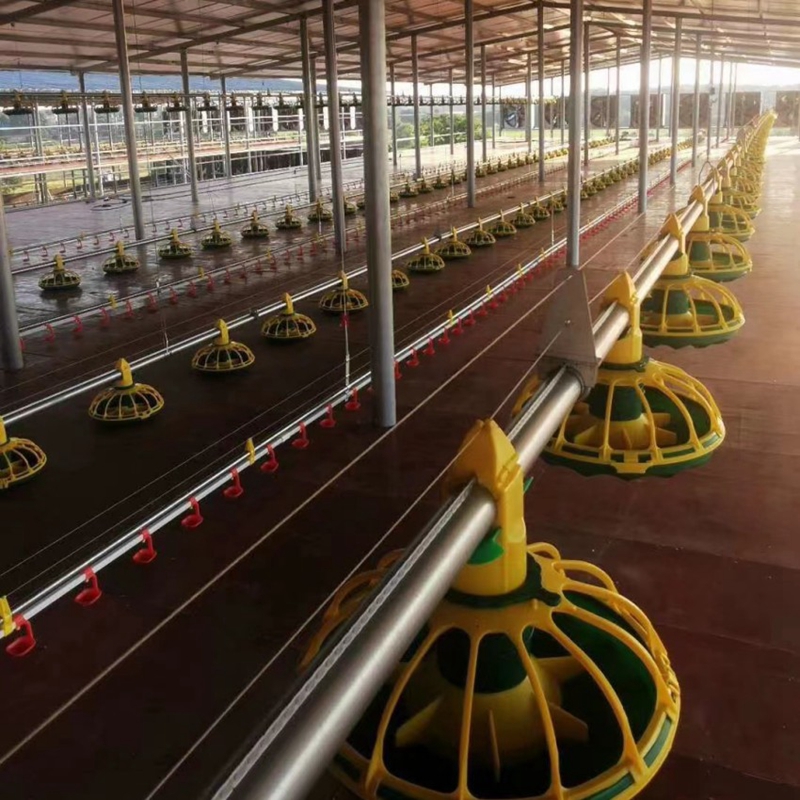automated poultry cages
Oct . 11, 2024 22:18 Back to list
automated poultry cages
The Rise of Automated Poultry Cages Transforming the Poultry Industry
In recent years, the poultry industry has undergone a significant transformation driven by advancements in technology. One of the most impactful innovations has been the development of automated poultry cages. These systems are revolutionizing how poultry farming operates by enhancing productivity, improving animal welfare, and reducing labor costs.
Automated poultry cages are high-tech solutions designed to optimize the housing, feeding, and management of chickens, particularly layers. Traditional poultry housing systems generally require extensive manual labor, which can be both time-consuming and physically demanding. In contrast, automated systems use various technologies, including robotics, sensors, and the Internet of Things (IoT), to streamline operations.
Efficiency and Productivity
One of the main advantages of automated poultry cages is their ability to significantly increase efficiency and productivity. These systems can be programmed to perform essential tasks such as feeding, watering, and egg collection without human intervention. For example, automated feeders can dispense the precise amount of feed at scheduled times, ensuring that birds receive optimal nutrition while minimizing waste.
Furthermore, automated egg collection systems utilize conveyor belts to gently transport eggs from the cages to a centralized collection point. This reduces the risk of breakage and ensures that eggs are collected in a timely manner, which is crucial for maintaining freshness and quality. The efficiency of these operations translates into higher production rates and ultimately increases profitability for poultry farmers.
Enhanced Animal Welfare
Beyond improving productivity, automated poultry cages also address animal welfare concerns
. Traditional farming methods often lead to overcrowded conditions and inadequate care, which can negatively impact the health and well-being of the birds. In contrast, automated systems are designed to ensure that chickens have adequate space and resources.Modern automated cages offer features such as adjustable lighting and climate control, which create optimal living conditions for the birds. Sensors can monitor temperature, humidity, and air quality, allowing farmers to make real-time adjustments to enhance the comfort of their flock. Additionally, automated systems can help reduce the stress levels of chickens, leading to better growth rates and overall health.
automated poultry cages

Labor Cost Reduction
Another significant benefit of automated poultry cages is the reduction of labor costs. With labor shortages becoming a common issue in agriculture, particularly in poultry farming, automated systems provide a viable solution. By reducing the need for manual labor, farmers can allocate their workforce more effectively, focusing on high-value tasks rather than routine chores.
Moreover, automation allows farms to operate with fewer staff while maintaining or even increasing production levels. This can be particularly advantageous for small to medium-sized operations that may struggle to compete with larger enterprises that have more financial resources. By investing in automated systems, these farmers can enhance their competitiveness and ensure sustainability in a rapidly evolving market.
Sustainability and Environmental Impact
As the demand for poultry products continues to rise, so does the need for sustainable farming practices. Automated poultry cages contribute to environmental sustainability by optimizing resource usage. Improved feed efficiency means that less feed is needed per unit of production, reducing the ecological footprint of poultry farming.
Additionally, automated systems often feature waste management solutions, such as composting or biogas production, which can further mitigate the environmental impact of poultry farming. By embracing automation, farmers can produce high-quality poultry products while minimizing waste and conserving resources.
Conclusion
In conclusion, automated poultry cages represent a significant leap forward in the poultry industry. By enhancing efficiency, improving animal welfare, reducing labor costs, and promoting sustainability, these systems are setting new standards for poultry farming. As technology continues to advance, we can expect to see even more innovations in this field, further transforming the way poultry is produced. Farmers who embrace automation today will position themselves for success in an increasingly competitive and demanding market. The future of poultry farming is not just about production; it's about creating a more sustainable and humane approach to feeding the world's population.
-
Hot Sale 24 & 18 Door Rabbit Cages - Premium Breeding Solutions
NewsJul.25,2025
-
Automatic Feeding Line System Pan Feeder Nipple Drinker - Anping County Yize Metal Products Co., Ltd.
NewsJul.21,2025
-
Automatic Feeding Line System Pan Feeder Nipple Drinker - Anping County Yize Metal Products Co., Ltd.
NewsJul.21,2025
-
Automatic Feeding Line System - Anping Yize | Precision & Nipple
NewsJul.21,2025
-
Automatic Feeding Line System - Anping Yize | Precision & Nipple
NewsJul.21,2025
-
Automatic Feeding Line System-Anping County Yize Metal Products Co., Ltd.|Efficient Feed Distribution&Customized Animal Farming Solutions
NewsJul.21,2025






